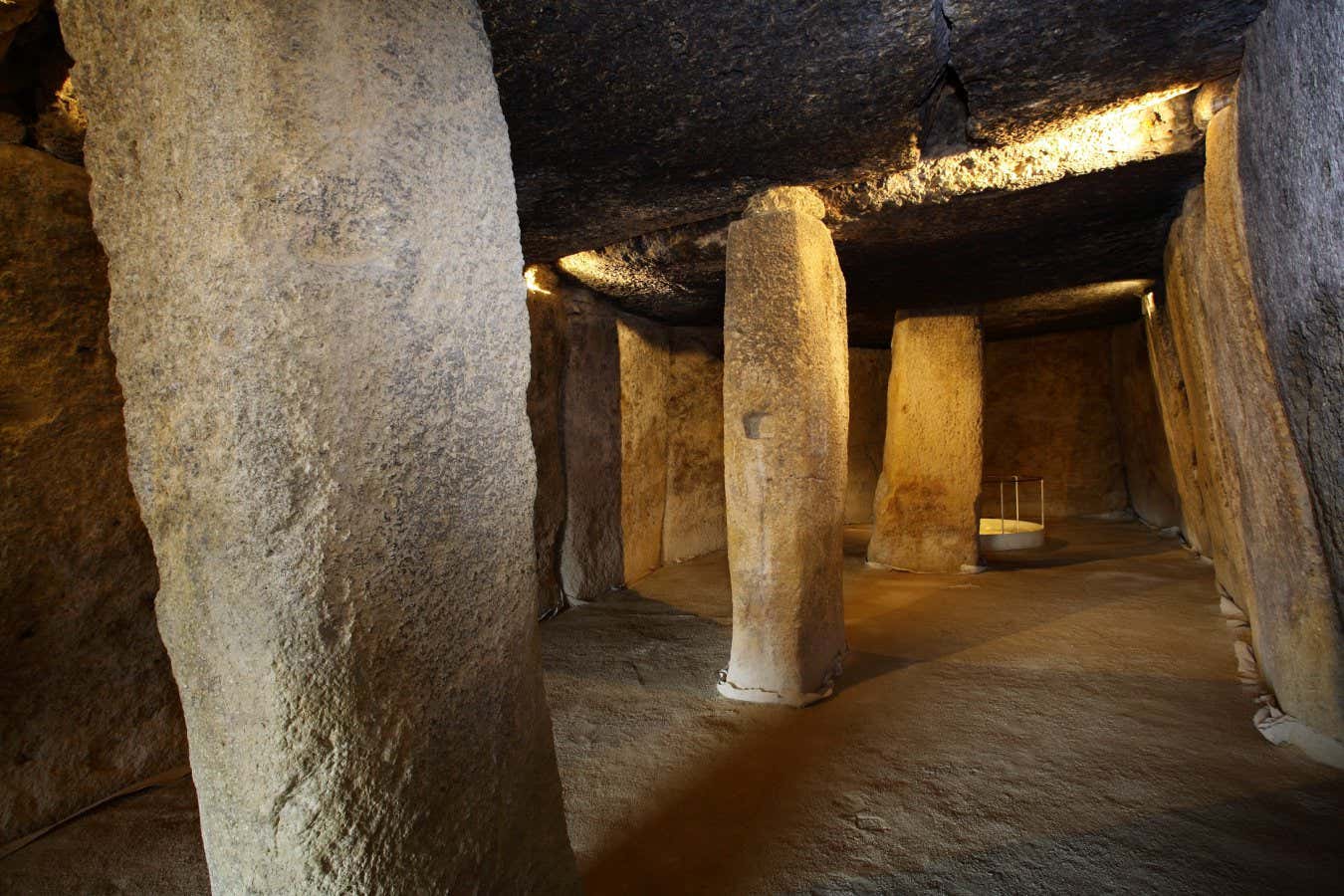A monument in southern Spain that dates to between 3600 and 3800 BC appears to have been built with an understanding of geology and physics
By Tom Leslie
23 August 2024
The interior of the monument in Spain known as the Menga dolmen
Miguel Ángel Blanco de la Rubia
Neolithic people seem to have understood sophisticated concepts in science, such as physics and geology, using this knowledge to construct a megalithic monument in southern Spain.
Called the Menga dolmen, it is among the earliest of such structures, dating to between 3600 and 3800 BC. Its roofed enclosure was constructed from 32 large stones, some of which are the biggest used in this sort of monument. The heaviest one weighs in excess of 130 tonnes, more than three times as much as the heaviest stone at Stonehenge in the UK, which was erected more than 1000 years later.
“[In the Neolithic Period], it must have been very powerful to experience this building made with these enormous stones,” says Leonardo García Sanjuán at the University of Seville in Spain. “It still stirs you. It still causes an impression even today.”
Advertisement
Read more
Human evolution: The astounding new story of the origin of our species
García Sanjuán and his colleagues have now performed detailed geological and archaeological analyses of the stones to infer what knowledge Menga’s builders would have needed to construct the monument, which is in the city of Antequera.
Paradoxically, they found that the rocks are a type of relatively fragile sandstone. While this means a greater risk of breaking, the team discovered that this was compensated for by shaping the stones so they locked into a very stable overall structure.
